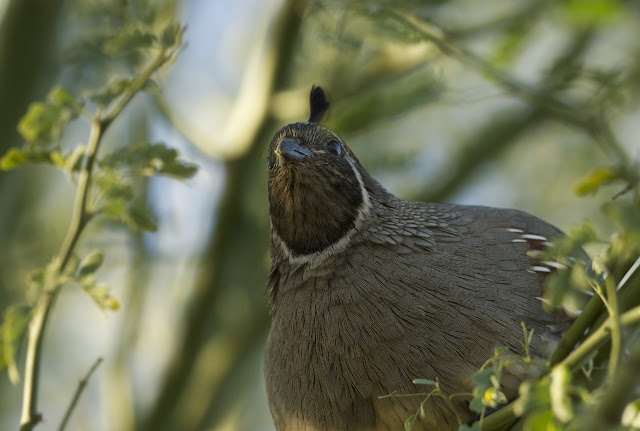Recent goal-oriented birding in Carolina involved working long or hard hours to log relatively usual birds. Recent birding in Arizona involved distant duck sighting in dim lighting. Both of these provided their own satisfactions, but not without a bit of strain all the same. Some people like to say they have to take a vacation from their vacation, and to these people I say, "You are weak vacationers. Weakness disgusts me...but not in a way that weakens me." But on the other, more relatable hand, birding benefits from its changes of pace as well. Sometimes it's nice to watch and photograph the birdies without concern of lists or chasing, the lazier, more passive approach in local circles.
Of course, this should only be done on workdays when there's a spare hour or two in the evening. Doing this on weekends (soft birding around town) is disgusting weakness, to reiterate.
Papago Park and the Desert Botanical Gardens, frequently mentioned on this site in times long past when I was very new to the Phoenix birding scene, are still some of the best places to crush common waterfowl, Sonoran species, and other just-a-bit-better-than-generic-park birds. (Most generic Arizona parks do not have cool Warblers like out east).

This GHOW is often in the cottonwood corner at the DBG. Some day it will poop on me, but this day was not that day.
So mild-mannered are these areas that even the timid Common Gallinule (red-shielded, obvi) will swim out into the open ocean without a life vest. Fun fact: The Common Gallinule actually used to be called the Common Morehen, because their entreating calls reminded one of a rakish greedy Oliver Twist impression.


Verdins are industrious nest-builders (not pictured). They build expansive breeding nests and more conservative roosting nests throughout the year--up to a dozen--because otherwise they would be idle, and idle feet are the Verdin Devil's playthings.

The DBG pulls in a vagrant rarity from time to time, but is mostly known for its close-up opportunities with desert flora and fauna. Even so, some unusual behaviors may still be observed. What flock of birds is feeding on buds in this mesquite?


Yes the answer is Quail, Gambel's Quail. Timid like most Quail species, GAQUs also become very tame and confident in the right setting, probably also like most Quail species.

Curve-billed Thrashers also take to the trees in groups, gregarious behavior untypical of the family. Although that may just be circumstantial because these Thrashers were obviously a family, with the two younger birds following the presumed parent around incessantly. The mature adult had a shorter, stubbier bill than many CUBUs I've seen. I have no idea if this is entirely random or may be a way to sex the birds, like with Curlew and Dowitchers?


Cactus Wrens are notoriously hardy birds. They may not be as tough as Gray Jays, per se, but are nonetheless able to withstand living in areas entirely without free-standing water and can also withstand living in the middle of Phoenix suburbia--provided the landscaping suits. They are also highly territorial during nesting season and will chase reptiles and mammals either away or into cholla cactus snares near their nesting sites, like clever and less passive clown fish. They also destroy other bird nests and bust eggs. What a jerk. Pretty great state bird eh?







